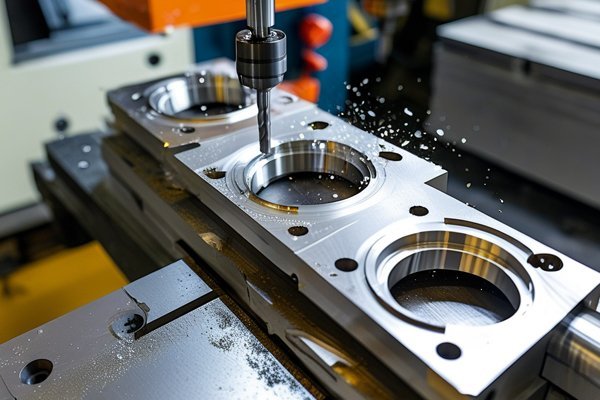Have you ever wondered why some precision parts in machinery seem to perform flawlessly while others fail under stress? The answer often lies in material selection, particularly the thickness of the materials used in CNC machining. In fact, studies suggest that variations in material thickness can lead to performance differences of up to 30% in critical applications. Such statistics open up a pivotal aspect of CNC machining worth examining closely: the intricate relationship between material thickness and machining performance.
In this blog, we will explore how material thickness influences various aspects of CNC machining processes, from machining accuracy and tool wear to surface finish and thermal deformation. We will dive into industry-specific scenarios where thickness plays a critical role and offer practical solutions for optimizing your machining operations.
Understanding CNC Machining Basics
Before delving deeper into the effects of material thickness, let’s briefly cover what CNC machining entails. Computer Numerical Control (CNC) machining is a manufacturing process used to create precise parts and components. It involves the use of computer software to control machines like lathes, mills, routers, and grinders. CNC machines offer unmatched accuracy and repeatability, which makes them ideal for industries ranging from aerospace to automotive.
In CNC machining, selecting the right material is crucial. The material type impacts tool selection, cutting speed, and the overall efficiency of the project. Among these factors, material thickness emerges as a significant variable affecting the machining process.
The Impact of Material Thickness on CNC Machining Performance
One of the most critical factors affected by material thickness is machining accuracy. Components cut from thicker materials may face challenges due to greater rigidity during the cutting process.
When machining thicker materials, heat generation from the cutting process increases. This can cause thermal expansion and deformation of both the workpiece and the tools, affecting the overall quality of the machined parts.
The wear on tools can also vary significantly based on the material thickness being machined. Thicker materials generally exert more force on the cutting tools, resulting in increased wear.
The quality of the surface finish is vital for many applications where aesthetics and functionality converge. Thicker materials can complicate this aspect of machining due to increased cutting forces and tool interactions.

Industry Applications: When Thickness Matters
In the aerospace sector, components must withstand considerable stress and environmental conditions. Thicker aluminum alloys or titanium parts are often machined for structural integrity.
Automobiles often utilize a variety of metal thicknesses across their components. Thinner materials might be used in non-structural components, while thicker materials are essential for frameworks and safety-related structures.
Solutions for Optimizing Material Thickness in CNC Machining
To capitalize on the benefits and mitigate the disadvantages associated with material thickness, consider the following solutions:
Conduct a thorough analysis of potential materials before machining. Understand their physical properties, including thermal characteristics, machinability, and wear behavior.
Implement adaptive machining strategies that allow operators to adjust cutting parameters (speed, feed rate, depth of cut) based on the specific thickness of the material being machined.
Utilize advanced simulation software to visualize the impacts of various thicknesses before actual machining begins. This can facilitate intelligent decision-making and enhance design efficiency.
Invest in training CNC operators on how to recognize the intricacies of machining various thicknesses. Continuous education informs operators of best practices in tool selection, speed adjustments, and understanding material behavior during machining.
In summary, understanding how material thickness influences CNC machining performance is critical for achieving high-quality results. From machining accuracy and thermal effects to tool wear and surface finish, the implications of thickness are manifold. Engaging in comprehensive material analysis, adopting adaptive machining strategies, and investing in employee training can dramatically enhance machining outcomes.
As industries evolve and demand increased precision and efficiency, the significance of material thickness will continue to grow in importance. By applying the techniques and insights shared in this blog, you can contribute to more successful projects, reduce waste, and ensure that CNC machining meets the rigorous standards of today’s manufacturing landscape.
Consider this a call to action for manufacturers and machinists alike: a deeper understanding of material thickness could be the key to unlocking enhanced performance, increased productivity, and long-term success in your CNC machining endeavors.






